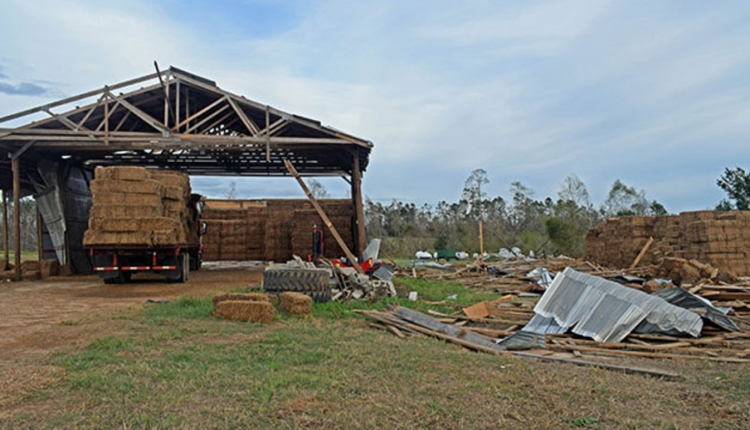
Sitting comfortably reclined in my living room and watching the Weather Channel on the evening of October 11, I couldn’t believe the devastation. Hurricane Michael had made landfall on the Florida Panhandle the day before, packing maximum sustained winds of 155 miles per hour.
I’ve had experience with Midwest tornadoes, but hurricanes can only be described as tornadoes on performance enhancing drugs in terms of scale and reach.
Most of the televised hurricane coverage comes from the coastal cities where reporters can find safe refuge between their on-camera minutes. Here, they also can document the effects of water surge.
In the case of Michael, Panama City and Mexico Beach were targeted locations for boots-on-the-ground reporting to capture the landing of the eyewall.
On this evening following the hurricane’s landfall, the “boots” had moved about 60 miles due north to Marianna, an inland epicenter of destruction based on the video footage being shown.
I thought of Doug Mayo, the long-time and well-respected Jackson County extension agent based in Marianna. I also thought about the University of Florida’s agricultural research center that was located in the area.
That same evening, I sent an email message to Mayo offering prayers and thoughts. I also asked for a report on agricultural damage sometime down the road. This past week, he obliged.
“This storm devastated the rural community and was particularly hard on farmers and ranchers,” Mayo said. “Nobody was prepared for a storm of this magnitude . . . I’m not sure you could be. This hurricane caught everybody by surprise as we got very short notice of the strength of what was about to hit us,” he added.
Mayo noted that most all farm equipment and hay barns were damaged or destroyed.
“Fences around here were particularly vulnerable,” Mayo reported. “Many small farms have allowed trees to grow in fence lines for shade. Huge oaks and pines were pushed over taking the fence down with them. Most do not have the specialized equipment to deal with whole tree removal,” he said.
As with any natural disaster, it’s often not just the obvious physical destruction that leads to financial loss and hardship. Mayo explained that many farmers and ranchers have understandably invested their effort and time into cleaning up debris and repairing damaged infrastructure. As such, normal farm operations for this time of year — taking the last cutting of hay or planting winter annual pastures — have been delayed.
“I am concerned about feed for the winter,” Mayo said. “It keeps raining and frost is not far off. We need at least a week of warm, dry weather to get our fall cutting harvested.”
Mayo also noted that many of the area’s farms have timber acreage that was severely damaged by the storm. “There are no USDA programs for lost timber income,” he said.
Though Mayo’s own home was spared by the storm — with the exception of losing about 30 percent of the roof’s shingles — other employees in Mayo’s office were not as fortunate.
“Of my staff of 13 people, two had homes destroyed, two are living elsewhere because of major damage to their homes that created water damage and mold issues, and one employee lost both of his vehicles,” Mayo reported. “Everyone has huge trees down in their yards that no insurance policy will cover the removal of,” he added.
Research farm
“We had damage, but things are starting to get back to normal,” said Glen Aiken, director of the North Florida Research and Education Center. “I think we’ll be okay,” he said in a conversation I had with him last week.
Aiken noted that most of the damage was at the Marianna facility where extensive building repairs will be needed.
As with commercial farms, considerable damage was also done to fences at the beef research unit in Marianna and this will have an impact on current and future research efforts, according to Aiken.
The impact of Hurricane Michael was far-reaching as it moved through the Southeast and toward the Chesapeake Bay. The agricultural damage in Georgia alone was estimated at over $2 billion. Mayo recently offered this damage report from Florida’s Panhandle.
Both Aiken and Mayo were thankful that the number of lives lost from the storm wasn’t higher. They also acknowledged and were thankful for the tremendous amount of volunteer cleanup help, both from within and outside the region.


